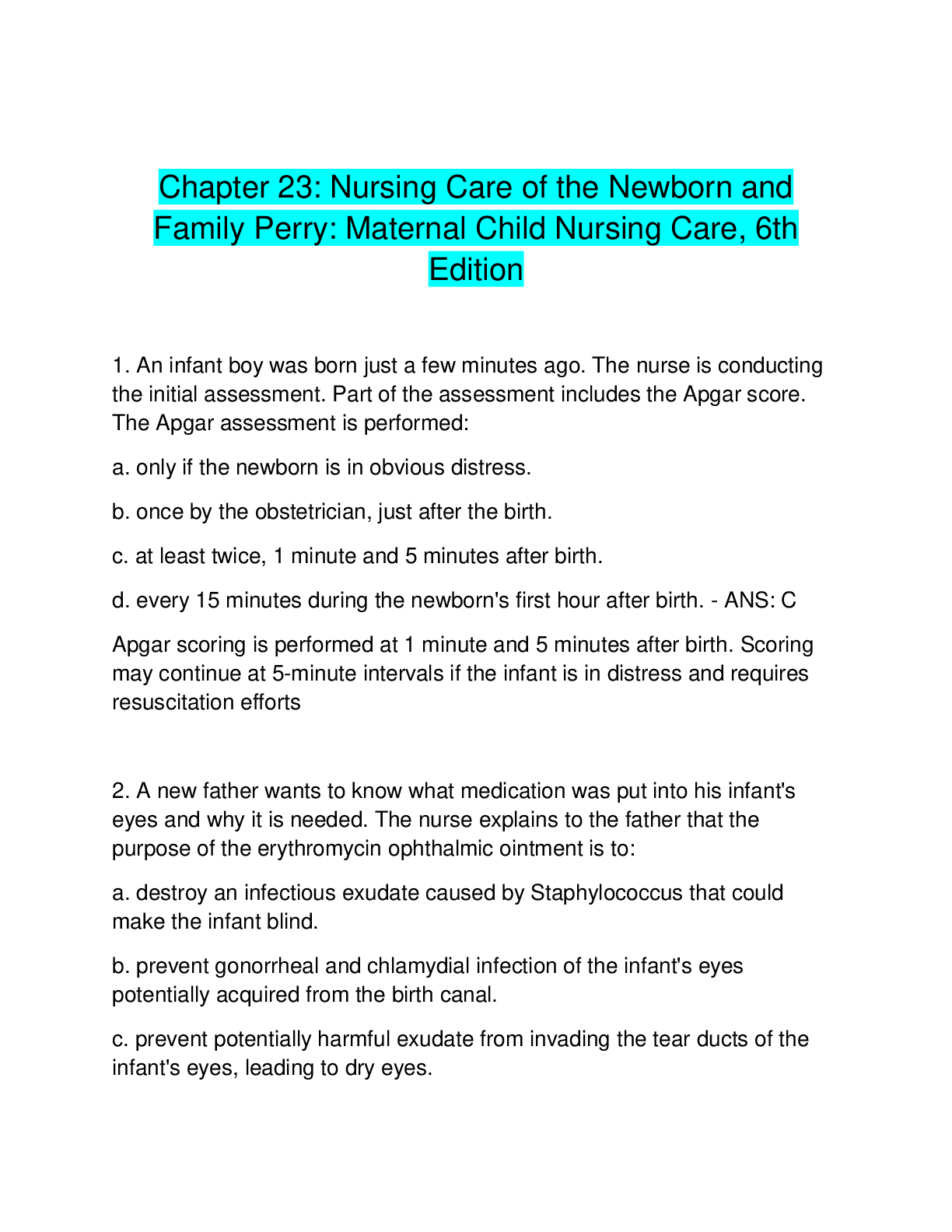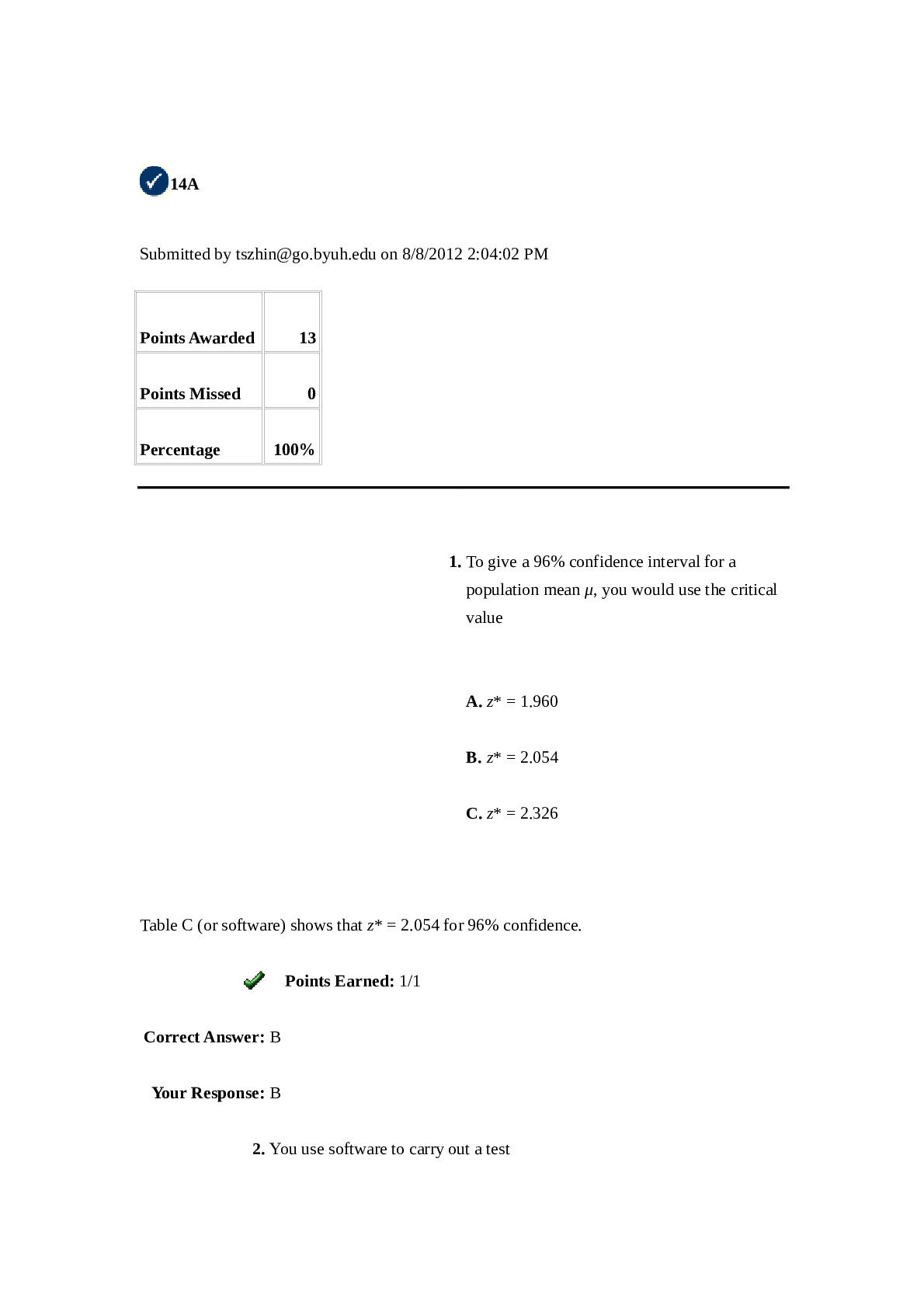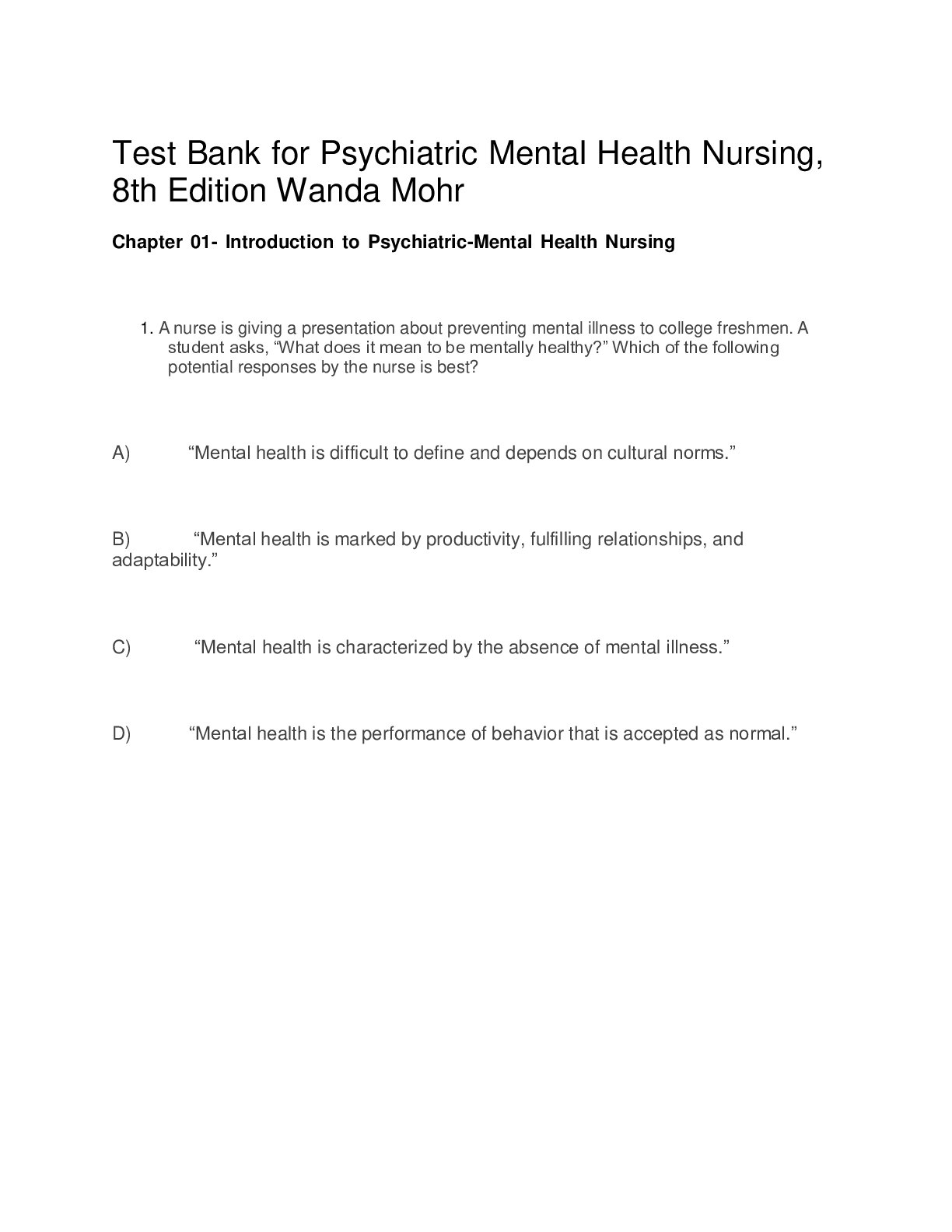Search for
Filter By
Rating
Price in $
Search Results 'Infectious'
Showing All results
Sort by
Health Care > EXAM > Chapter 23. Nursing Care Of Patients With Valvular, Inflammatory, And Infectious Cardiac Or Venous Disorders
*NURSING > TEST BANK > Infectious Disease Prevention and Control Stanhope: Public Health Nursing: Population-Centered Health Care in the Community, 10th Edition,100% CORRECT
*NURSING > TEST BANK > Infectious Disease Prevention and Control Stanhope: Public Health Nursing: Population-Centered Health Care in the Community, 10th Edition,100%CORRECT
*NURSING > EXAM > Infectious Disease Prevention and Control Stanhope: Foundations of Population Health for Community/Public Health Nursing, 5th Edition,100% CORRECT
*NURSING > EXAM > Infectious Disease Prevention and Control Stanhope: Foundations of Population Health for Community/Public Health Nursing, 5th Edition,100% CORRECT
*NURSING > EXAM > Cognitive Level: Application Client Needs: Safe, Effective Care Environment Nursing Process: Assessment 3. The nurse is caring for four clients on a medical–surgical unit. The secretary gives the nurse the morning labs. Which of the following labs would require that the nurse call the physician and inform the healthcare provider about the client’s abnormalities? 1. WBC 14,600 mm3 2. Serum protein 6.9 g/dL 3. I & D (incision and drainage) showing no growth for the last 24 hours 4. Albumin 4.2 g/dL Answer: 1 Rationale: When the nurse is caring for several clients, all of the labs should be checked frequently throughout the shift to assess for any abnormalities. The WBC in option 1 is abnormal. (Normal WBC 4,000–10,000 mm3 .) All of the other lab results are within acceptable range; therefore, the results should not be called in to the physician. Cognitive Level: Application Client Needs: Physiologic Integrity Nursing Process: Assessment 4. The nurse is orienting a new graduate. The nurse is reinforcing the importance of standard precautions. Which of the following observations by the nurse would require further education regarding standard precautions? 1. The graduate nurse understands to wash hands when entering and exiting the client’s room. 2. The graduate nurse wears gloves when serving breakfast trays to various clients. 3. The graduate nurse wears a gown, gloves, and goggles when suctioning a client. 4. The graduate nurse leaves all supplies in the room of a client who is in contact isolation. Answer: 2 Rationale: The nurse must have an understanding of standard precautions. Prevention is the most important measure to prevent nosocomial infections. Standard precautions were published in 1996 that provide guidelines for the handling of download full file at http://testbankinstant.com blood and other body fluids. These guidelines are used with all clients, regardless of whether they have a known infectious disease. Standard precautions are used by all healthcare workers who have direct contact with clients or with their body fluids. It is not necessary for the nurse to wear gloves while delivering food trays to the client, because there is not contact with the client. Cognitive Level: Application Client Needs: Safe, Effective Care Environment Nursing Process: Evaluation 5. The admitting department alerts the nurse on a medical–surgical unit that a client with active tuberculosis (TB) is being admitted to the unit. Which type of isolation is appropriate based on the client’s diagnosis? 1. Standard precautions 2. Airborne precautions 3. Droplet precautions 4. Contact precautions Answer: 2 In addition to handwashing and standard precautions, the nature and spread of some infectious diseases require that special techniques be used to protect uninfected clients and workers. The client with pulmonary tuberculosis will be placed in airborne precautions. The client should be placed in a private room with special ventilation that does not allow air to circulate to general hospital ventilation; a mask or special filter respirators will be used for everyone entering the room. Cognitive Level: Application Client Needs: Safe, Effective Care Environment Nursing Process: Assessment 6. A client is receiving IV vancomycin for the treatment of Clostridium difficile. The nurse understands that the client who develops flushing, tachycardia, and hypotension during the infusion of vancomycin indicates: 1. Ototoxicity effect. 2. Superinfection. 3. Red man syndrome. 4. Hives. Answer: 3 download full file at http://testbankinstant.com Rationale: Vancomycin inhibits cell wall synthesis, and is used for serious infections. It is only effective against gram-positive bacteria, especially Staphylococcus aureus and Staphylococcus epidermidis. The nurse should infuse this medication slowly over 60 minutes or more to avoid “red man” syndrome. The syndrome is characterized by erythematous rash, flushing, tachycardia, and hypotension. Clients can become dizzy and agitated. Cognitive Level: Application Client Needs: Physiological Integrity Nursing Process: Evaluation 7. The physician has ordered for the client to receive a trough blood level to evaluate the therapeutic effect of an antibiotic. The nurse understands that the trough should be ordered: 1. A few minutes before the next scheduled dose of medication. 2. 1–2 hours after the oral administration of the medication. 3. 30 minutes after the IV administration. 4. During the infusion of the antibiotic. Answer: 1 Rationale: Antibiotic peak and trough levels monitor therapeutic blood levels of the prescribed medication. The therapeutic range—the minimum and maximum blood levels at which the drug is effective—is known for a given drug. By measuring blood levels at the predicted peak (1–2 hours after oral administration, 1 hour after intramuscular administration, and 30 minutes after IV administration) and trough (usually a few minutes before the next scheduled dose), it is also possible to determine whether the drug is reaching a toxic or harmful level during therapy, increasing the likelihood of adverse effects. Cognitive Level: Application Client Needs: Safe, Effective Care Environment Nursing Process: Assessment 8. The nurse needs to change a dressing on the client’s abdomen. Which of the following techniques should be implemented? 1. Contact precautions 2. Standard precautions 3. Droplet p
*NURSING > EXAM > Ch10 infectious diseases Davis Advantage for Pathophysiology 2nd Edition Capriotti Test Bank
*NURSING > TEST BANK > Primary Care Art and Science of Advanced Practice Nursing - Test Bank, Chapter 63. Infectious Disorders
*NURSING > STUDY GUIDE > Various viruses and bacteria can cause infectious conjunctivitis, also known as pink eye, reports the patient information website All About Vision
*NURSING > QUESTIONS & ANSWERS > Chapter 30: Care of Patients with Noninfectious Lower Respiratory Problems Ignatavicius: Medical-Surgical Nursing, 8th Edition









